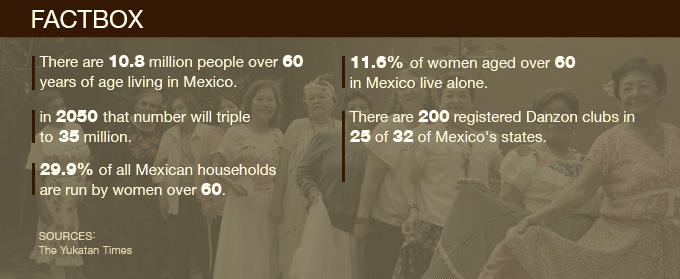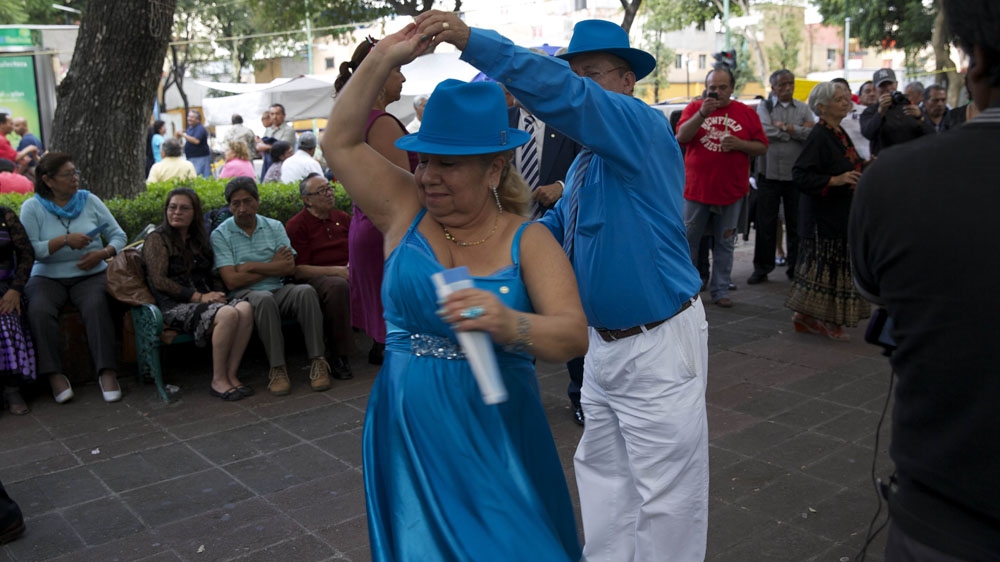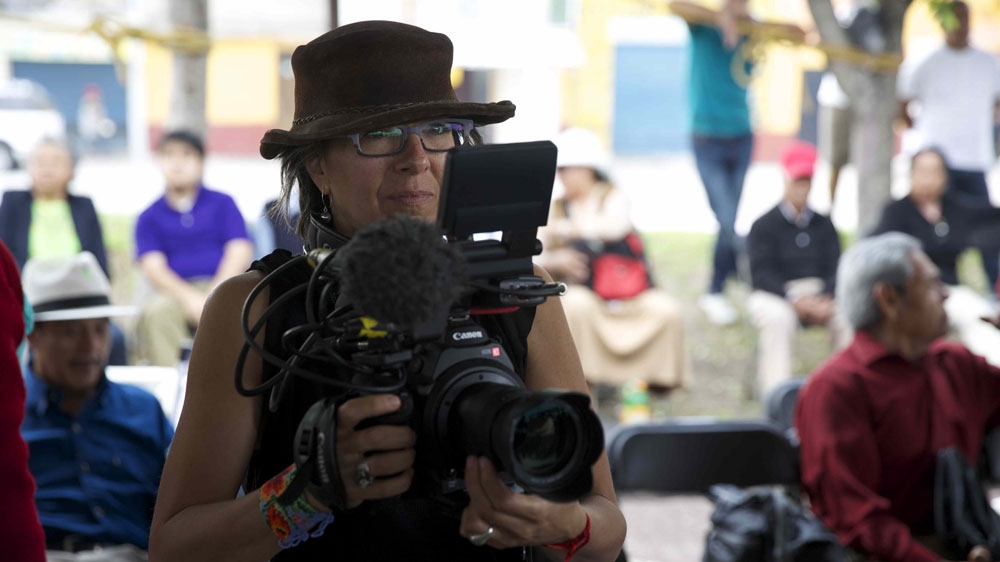When you reach that latter stage of life so many assumptions are made: you will retire, you will relax or slow down and definitely leave the fast lane of life behind. All with the idea that you will happily accept being something less.
But this film looks at a small group of the senior set who get up on their feet every day and enthusiastically chase their next challenge, and in doing so challenge conventional thinking about the elderly.
They dance in the traditional Mexican style, Danzon. They meet Saturday nights in the public plazas of Mexico City to explore the sensuality of dance, enjoy romance and seek out the possibility of love in this, their last chapter of life.
As we follow their embrace of new passions, we witness the transformation of these ageing souls from the nameless and neglected to – if only for a small stage or a brief moment – become lithe, lively stars living to the fullest at the onset of twilight.
 |
| ANDREA MARTINEZ CROWTHER | |
Andrea is a Mexican-Canadian filmmaker and Fulbright Scholar with a Master’s degree in film from the University of Southern California. She has directed two feature films; the fiction film, Insignificant Things and Ciclo , an intimate documentary about an extraordinary bicycle journey her father and uncle made from Mexico to Canada in 1956. Currently, Andrea is developing various television series and films with her production company, Weeping Willow. |
Danzon – a traditional music genre and dance style originating in Cuba – has gone through a revival in Mexico. In dozens of public plazas around the country, people – mostly the elderly who remember this dance from their youth – gather to dance on a weekly basis.
The first time I went to one of these plazas, I was immediately taken; matching turquoise outfits, bright green eyeshadow and scarlet lips, an orquid in a fancy – albeit somewhat outdated – hairdo, elegant fedoras and shiny red-patent-leather shoes.
At first, I just watched the dancing, mesmerised by the coordinated movements of tinseled feet forming an imaginary “square” on the dancefloor, the dainty opening of fans on cue, the grace with which couples moved in sync. However, upon closer examination, I noticed that most of the dancers were, in fact, not “couples”.
I started to pay attention to the dynamics going on; gallant gentlemen nonchalantly scanning the plaza for possible dance partners, coquettish women fanning themselves pretending not to be anxiously awaiting an invitation to dance, the men’s hands on the waists of their partners inching discreetly – or not – downward.
The way in which some danzoneros gazed passionately into each other’s eyes. This was what caught my eye as a filmmaker.
 |
| Danzon, a traditional music genre and dance style originating in Cuba, has gone through a revival in Mexico [Al Jazeera] |
We tend to the think of the elderly like we do our grandparents; homely, loving, adorable, chaste and too old to do anything other than make cookies and pamper their grandchildren. They do not think about passion or romance… much less about sex. But one visit to the Ciudadela plaza proved this concept to be totally erroneous.
In order to delve into the world of the danzoneros, I decided to take danzon lessons at the Ciudadela plaza because I figured the best place to establish rapport and trust with them was on the dancefloor. Needless to say, I often felt as if I had two left feet but the gentlemen were always very patient with me and taught me the 11 basic steps to form the “square”.
And then I set out to search for my characters. Nelly was the first to catch my eye. Her poise and grace were striking from all the way across the plaza. An eminence in the circles of danzon, she has won many prizes and even has a piece named after her “Nelly, of Veracruz”. The most reserved of the protagonists, it took time to gain her trust, but ultimately she bared her heart for the camera, confiding parts of herself and her past she had never spoken of before.
Rebeca is the most bold and eye-catching of the three protagonists. One of the few women who will ask men to dance, her sensual hip-swaying movements always magnetise masculine eyes. She learned danzon informally and does not care about rehearsed steps and routines. Her dancing is all about feeling the music and enjoying a new-found femininity. She was surprisingly frank in talking about men and sex.
 |
| Throughout the film, we watch three women as they vibrantly embrace life, love and the dance floors of Mexico City [Al Jazeera] |
Guillermina and Armando were not hard to spot with their spectacular matching outfits and perfectly synchronised movements. The first time I approached them, Armando told me they had been married for 50 years, a play on words “cincuenta” (50) = “sin cuenta” (who’s counting) which I did not catch onto. It was only after a few more conversations that they “confessed” they were not married but rather dance partners, and to some degree unknown to each other’s respective families. This of course made their relationship all the more complex and captivating and added a grain of tension and drama to the shoot.
Ultimately, the protagonists of My Dancing Heart show us that life does not end when you grow old. There is sensuality. There is romance. There is flirtation. There is desire. Of course, there is also pain and loss. And aching bones and loneliness. But for these women and men, that is what living is all about. You laugh and you cry. You feel pleasure and you feel pain. You live.
Source: Al Jazeera































